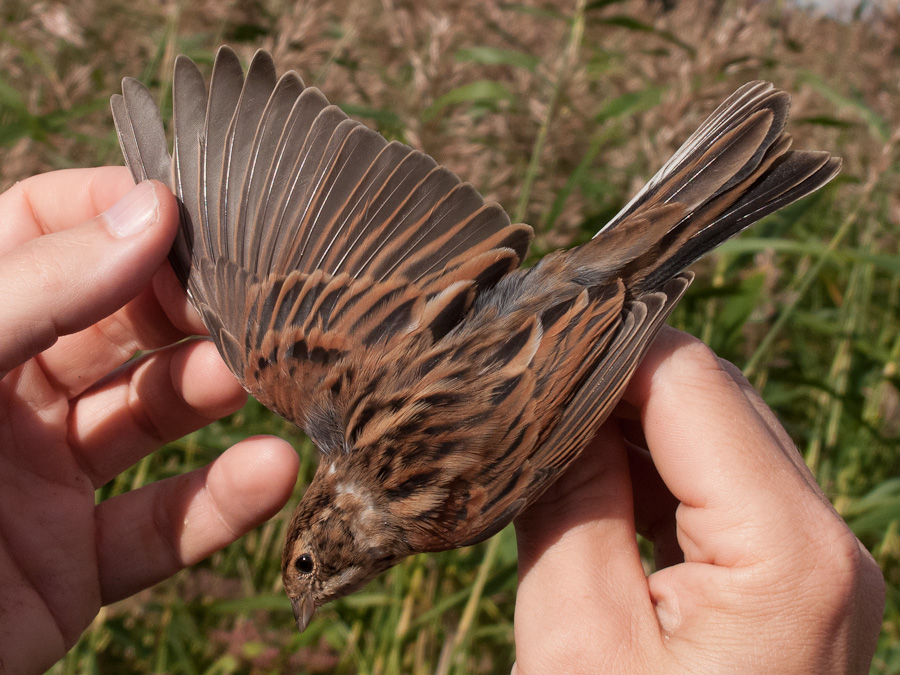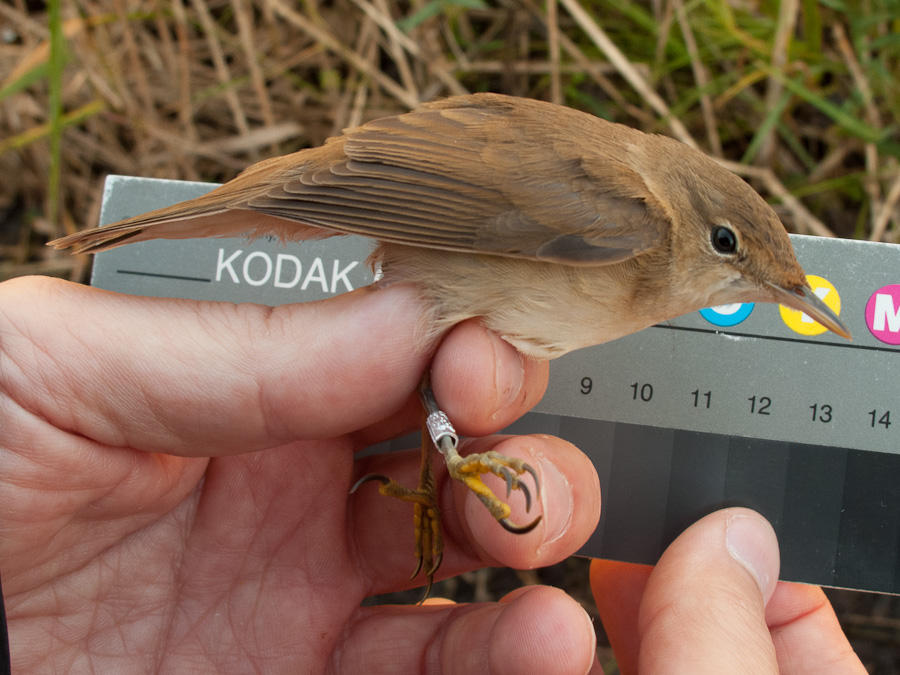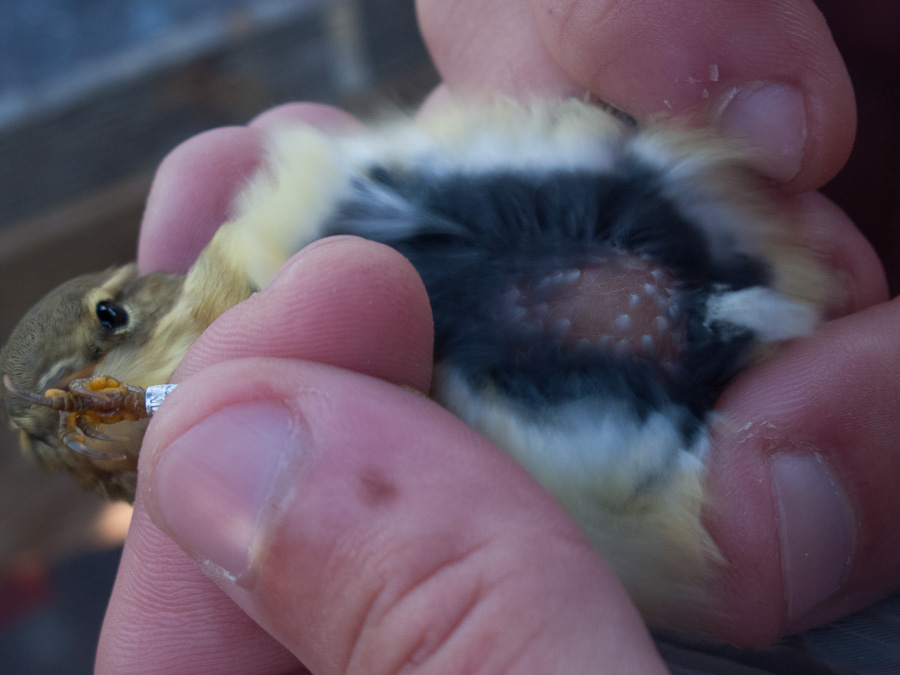Laajalahti 26 August 2012
A & A, Ina, Jussi, Matthias and Mikke were present today. The temperature was +5C in the morning, calm, with the sun rising at 5.55. At 12.00 the temperature had risen to 23C, and it was sunny. Autumn is advancing, but still lots of mosquitos, and a lot of birds flying over the reedbeds: 2 Red-throated Divers, Barnacle Geese, raptors including Ospreys, Hobbies, Kestrels, a Goshawk, a Marsh Harrier, and also some Red-throated Pipits stopping in their journey south. Later in the day, a Eurasian Bittern stood on the wooden boardwalk just beside the nets,hopped up and disappeared behind the reeds.
| yearlings ringed | older ringed | yearlings retrapped | older retrapped | |
| Red-backed Shrike | 2 | 2 | ||
| Sedge Warbler | 37 | 3 | 1 | |
| Eurasian Reed Warbler | 6 | |||
| Blyth's Reed Warbler | 1 | |||
| Willow Warbler | 22 | |||
| Blue Tit | 9 | 1 | 2 | |
| Eurasian Reed Bunting | 2 | |||
| Dunnock | 1 |
The total was 89 birds, which is somewhat lower than in the previous trapping days (the previous day and four days earlier, when over 100 birds on both). No Sylvia warblers at all, for example, but our first Dunnock of the season (a retrap, ringed not so may days before, probably). The Sedge and Willow Warblers were mostly quite fat.

This Eurasian Reed Bunting was our own retrap, having been ringed on 21 July, when it was mostly in juvenile plumage. Now it has moulted to first winter plumage and is clearly a male. Ageing this indivdual is not quite as easy as it usually is (but fortunaltey we know its age from the ring). The tail feather shape is not that obviously juvenile in this bird, but the primary coverts look juvenile. There should be a moult contrast somewhere in the region of the innermost secondary, tertials and greater coverts, but it is not easy to find. The primary tips are still very fresh.

A quite normal looking young Eurasian Reed Warbler, with darkish upperparts and wing feathers, and dark claws.

Lots of fat on this young Willow Warbler, visible when the feathers are blown aside. Quite warm and sunny weather as in the last weeks seem to be good for fattening passerines.